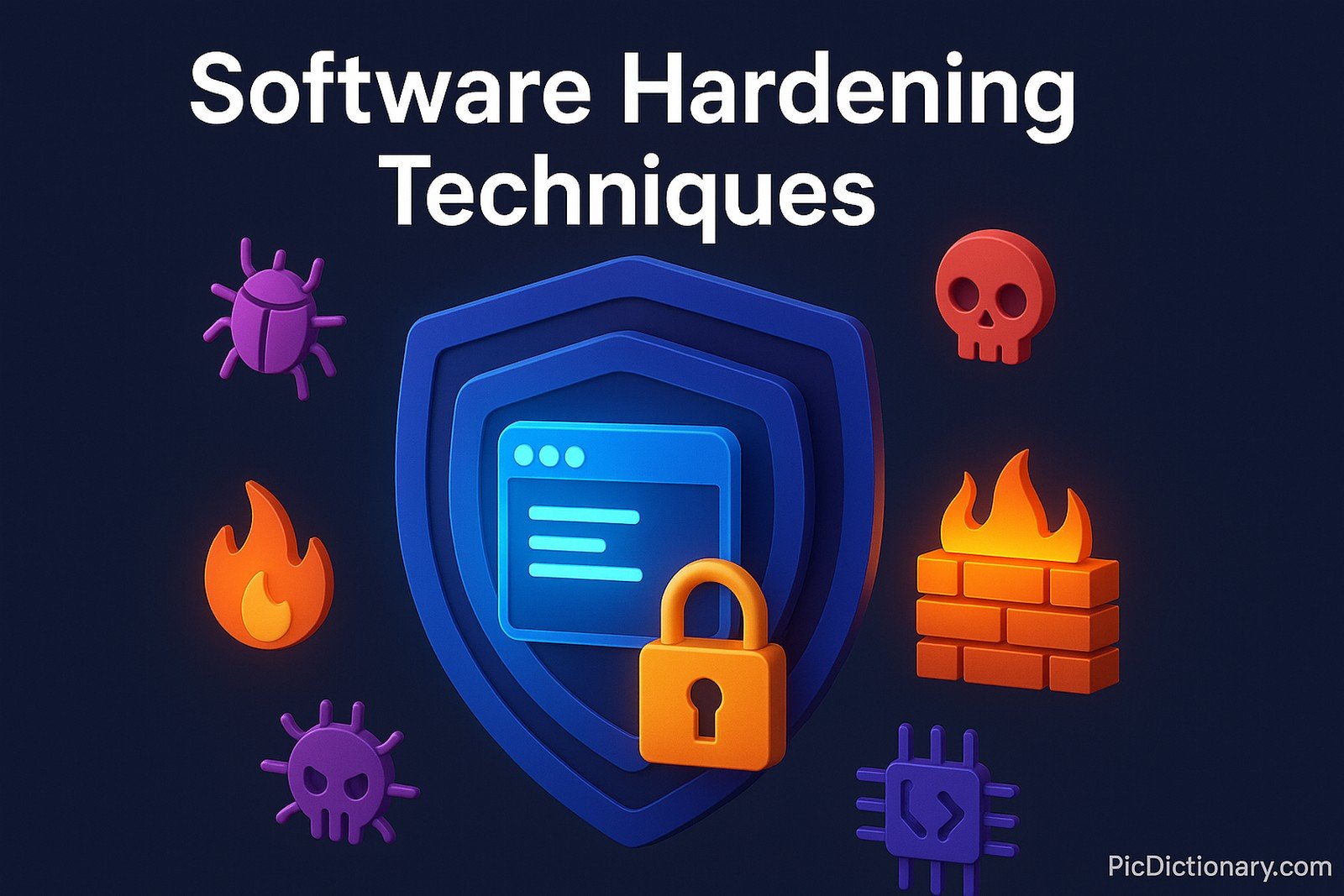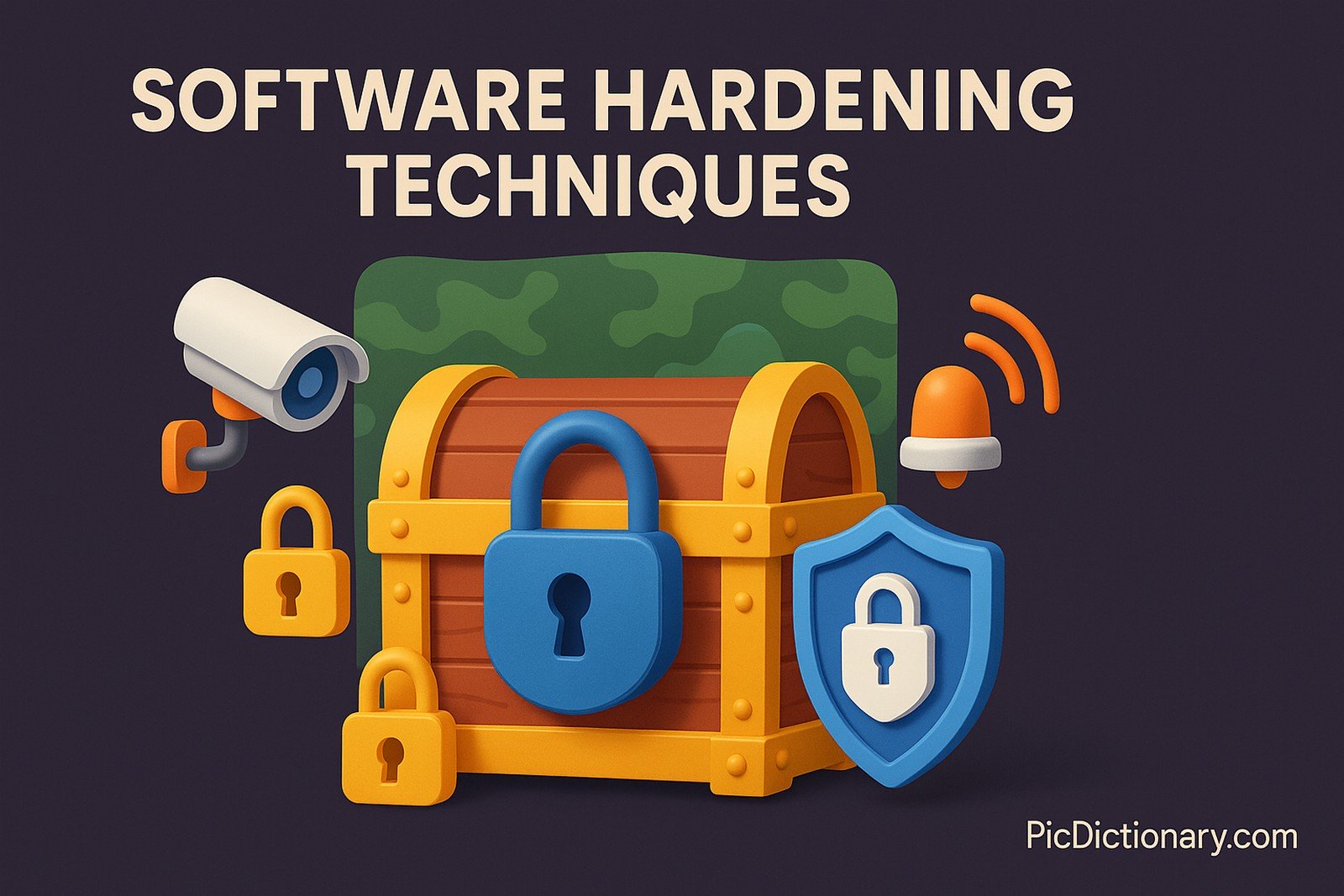Software Hardening Techniques

Quick Navigation:
- Software Hardening Techniques Definition
- Software Hardening Techniques Explained Easy
- Software Hardening Techniques Origin
- Software Hardening Techniques Etymology
- Software Hardening Techniques Usage Trends
- Software Hardening Techniques Usage
- Software Hardening Techniques Examples in Context
- Software Hardening Techniques FAQ
- Software Hardening Techniques Related Words
Software Hardening Techniques Definition
Software hardening techniques refer to a set of security measures applied to software applications to reduce vulnerabilities and protect them from cyber threats. These techniques include code obfuscation, patch management, secure coding practices, runtime application self-protection (RASP), and system configuration hardening. By employing these methods, organizations can mitigate risks such as malware attacks, unauthorized access, and data breaches. Software hardening is a critical component of cybersecurity strategies, ensuring that software remains resilient against evolving threats.
Software Hardening Techniques Explained Easy
Imagine you have a treasure chest, and you want to make sure no one can steal your treasure. To protect it, you put a strong lock on it, hide it in a secret place, and maybe even set up a security alarm. Software hardening techniques do the same for computer programs—they add extra locks and security layers to prevent hackers from breaking in and causing harm.
Software Hardening Techniques Origin
Software hardening techniques emerged as a necessity in the early days of computing when malicious actors began exploiting software vulnerabilities. The concept gained traction in the 1980s and 1990s as cybersecurity threats became more sophisticated. As operating systems and applications grew in complexity, software hardening became a fundamental practice to enhance security and reliability.
Software Hardening Techniques Etymology
The term "hardening" originates from the idea of making something more resistant to damage or attacks. In the context of software, "hardening" implies strengthening an application’s defenses against cyber threats.
Software Hardening Techniques Usage Trends
With the rise in cyber threats, software hardening techniques have become increasingly critical. Organizations across industries such as finance, healthcare, and government are investing heavily in security measures to protect their systems. Trends indicate a growing reliance on automated security tools, AI-driven vulnerability scanning, and continuous software patching to combat emerging threats. Regulatory compliance requirements also drive the adoption of hardening practices to safeguard sensitive data.
Software Hardening Techniques Usage
- Formal/Technical Tagging:
- Cybersecurity
- Software Security
- Secure Coding - Typical Collocations:
- "software hardening strategies"
- "secure coding practices"
- "application security measures"
- "vulnerability mitigation techniques"
Software Hardening Techniques Examples in Context
- A company implements runtime application self-protection (RASP) to detect and prevent security breaches in real time.
- Developers use secure coding practices to prevent common vulnerabilities such as SQL injection and buffer overflows.
- A government agency applies software hardening techniques to secure sensitive databases against cyberattacks.
Software Hardening Techniques FAQ
- What are software hardening techniques?
Software hardening techniques are security measures designed to reduce vulnerabilities and protect applications from cyber threats. - Why is software hardening important?
Software hardening is crucial for preventing cyberattacks, ensuring data integrity, and maintaining the reliability of software systems. - What are some common software hardening techniques?
Common techniques include code obfuscation, secure coding practices, runtime application self-protection (RASP), patch management, and configuration hardening. - How does software hardening prevent cyber threats?
Software hardening strengthens security defenses, making it more difficult for hackers to exploit vulnerabilities and gain unauthorized access. - Can software hardening eliminate all security risks?
While software hardening reduces risks, it cannot eliminate all threats. Continuous monitoring and updates are necessary to maintain security. - What industries benefit most from software hardening?
Industries like finance, healthcare, government, and e-commerce rely on software hardening to protect sensitive information. - What is the role of AI in software hardening?
AI enhances software hardening by identifying vulnerabilities, automating security patches, and detecting anomalies in real time. - How does patch management contribute to software hardening?
Regularly applying security patches helps fix known vulnerabilities and prevents attackers from exploiting outdated software. - Is software hardening a one-time process?
No, software hardening is an ongoing process that requires continuous updates and improvements to address new threats. - How can developers implement software hardening techniques?
Developers can use secure coding practices, apply encryption, conduct penetration testing, and follow security best practices.

Software Hardening Techniques Related Words
- Categories/Topics:
- Cybersecurity
- Application Security
- Threat Mitigation
Did you know?
In 2017, the WannaCry ransomware attack exploited unpatched software vulnerabilities, affecting over 200,000 computers worldwide. Organizations that had implemented software hardening techniques, such as regular patch management and network segmentation, were able to mitigate or completely avoid the attack’s impact.
PicDictionary.com is an online dictionary in pictures. If you have questions or suggestions, please reach out to us on WhatsApp or Twitter.Authors | Arjun Vishnu | @ArjunAndVishnu

I am Vishnu. I like AI, Linux, Single Board Computers, and Cloud Computing. I create the web & video content, and I also write for popular websites.
My younger brother, Arjun handles image & video editing. Together, we run a YouTube Channel that's focused on reviewing gadgets and explaining technology.



Comments powered by CComment